An All-Optical Plasmon Modulator with a High Extinction Ratio Based on the Resonance of a Silver Block
Abstract
1. Introduction
2. Analysis of the Models
2.1. Three-Dimensional Model
2.2. Simulation Model
3. Analysis of Simulation Results
3.1. Different Electron Concentrations
3.1.1. Electric Field Distribution
3.1.2. Optical Transmission
3.1.3. Phase Shift
3.2. Different Silver Block Lengths
3.2.1. Electric Field Distribution
3.2.2. Optical Transmission
3.2.3. Phase Shift
3.3. Different Working Wavelengths
3.3.1. Electric Field Distribution
3.3.2. Optical Transmission
3.3.3. Phase Shift
3.3.4. Optical Transmission Versus Different Wavelengths and Electron Concentrations
4. Conclusions
5. Methods
Author Contributions
Funding
Institutional Review Board Statement
Informed Consent Statement
Data Availability Statement
Conflicts of Interest
References
- AlAloul, M.; Rasras, M. Low insertion loss plasmon-enhanced graphene all-optical modulator. ACS Omega 2021, 6, 7576–7584. [Google Scholar] [CrossRef] [PubMed]
- Xing, J.; Sun, C.; Xiong, B.; Wang, J.; Hao, Z.; Wang, L.; Han, Y.; Li, H.; Yu, J.; Luo, Y. Low loss hybrid plasmon polariton Mach-Zehnder modulators. OSA Contin. 2021, 4, 2721–2733. [Google Scholar] [CrossRef]
- Cao, Z.; Lin, H.; Cheng, Y.; Xu, Y.; Gong, Q.; Lü, G. Light-field modulation and optimization near metal nanostructures utilizing spatial light modulators. Chin. Phys. B 2024, 33, 104201. [Google Scholar] [CrossRef]
- Švanda, J.; Kalachyova, Y.; Mareš, D.; Siegel, J.; Slepička, P.; Kolská, Z.; Macháč, P.; Michna, Š.; Švorčík, V.; Lyutakov, O. Smart Modulators Based on Electric Field-Triggering of Surface Plasmon–Polariton for Active Plasmonics. Nanomaterials 2022, 12, 3366. [Google Scholar] [CrossRef]
- Yang, F.; Bi, Z.Y.; Zhang, H.; Fu, Z.Y.; Liu, C.X.; Fu, X.J.; Wu, J.W.; Ma, H.F. Quadrature-Phase-Shift-Keying Direct Modulator Based on Spoof Surface-Plasmon Polaritons. Phys. Rev. Appl. 2023, 20, 014049. [Google Scholar] [CrossRef]
- Ramírez, A.P.; Zhai, T.; Salas-Montiel, R.; Cortés, V.R. Dynamic tailoring large-area surface plasmon polariton excitation. J. Opt. 2024, 26, 115003. [Google Scholar] [CrossRef]
- Zhou, F. A broadband modulator based on graphene/black phosphorus heterostructure with enhanced modulation depth. Heliyon 2024, 10, e34684. [Google Scholar] [CrossRef]
- Barbillon, G. Latest Advances in Nanoplasmonics and Use of New Tools for Plasmonic Characterization. Photonics 2022, 9, 112. [Google Scholar] [CrossRef]
- Zhang, Z.; Yang, J.; He, X.; Han, Y.; Zhang, J.; Huang, J.; Chen, D.; Xu, S. Active enhancement of slow light based on plasmon-induced transparency with gain materials. Materials 2018, 11, 941. [Google Scholar] [CrossRef]
- Zhang, Z.; Yang, J.; Bai, W.; Han, Y.; He, X.; Zhang, J.; Huang, J.; Chen, D.; Xu, S.; Xie, W. Chipscale plasmonic modulators and switches based on metal–insulator–metal waveguides with Ge2Sb2Te5. J. Nanophotonics 2019, 13, 046009. [Google Scholar] [CrossRef]
- Yang, H.; Wang, Y.; Tiu, Z.C.; Tan, S.J.; Yuan, L.; Zhang, H. All-optical modulation technology based on 2D layered materials. Micromachines 2022, 13, 92. [Google Scholar] [CrossRef] [PubMed]
- Wang, H.; Niu, J.; Chen, Q.; Zhao, S.; Shao, H.; Yang, Y.; Chen, H.; Li, S.; Qian, H. All-optical modulator with photonic topological insulator made of metallic quantum wells. Nanophotonics 2024, 13, 3575–3580. [Google Scholar] [CrossRef] [PubMed]
- Yuan, J.; Dong, S.; Zhang, H.; Wu, C.; Wang, L.; Xiao, L.; Jia, S. Efficient all-optical modulator based on a periodic dielectric atomic lattice. Opt. Express 2021, 29, 2712–2719. [Google Scholar] [CrossRef]
- Li, Z.; Chen, J.; Ma, Z.; Tang, C.; Sua, Y.M.; Huang, Y.P. Parametric all-optical modulation on a chip. Phys. Rev. Appl. 2024, 21, 064049. [Google Scholar] [CrossRef]
- Basiri, A.; Rafique, M.Z.E.; Bai, J.; Choi, S.; Yao, Y. Ultrafast low-pump fluence all-optical modulation based on graphene-metal hybrid metasurfaces. Light. Sci. Appl. 2022, 11, 102. [Google Scholar] [CrossRef]
- Zhang, D.; Chen, Y.; Gong, S.; Wu, W.; Cai, W.; Ren, M.; Ren, X.; Zhang, S.; Guo, G.; Xu, J. All-optical modulation of quantum states by nonlinear metasurface. Light. Sci. Appl. 2022, 11, 58. [Google Scholar] [CrossRef]
- Cao, H.; Ding, M.; Chen, H.; Liu, C.; Yu, L.; Zhu, M.; Zhao, W.; Guo, J.; Li, H.; Yu, Z.; et al. High-efficiency all-optical modulator based on ultra-thin silicon/graphene hybrid waveguides. Adv. Opt. Mater. 2024, 12, 2301549. [Google Scholar] [CrossRef]
- Nayak, S.K.; Ahmed, M.S.; Murali, R.; Bhavani, B.; Prasanthkumar, S.; Giribabu, L.; Raavi, S.S.K. All-optical modulation and photonic diode based on spatial self-phase modulation in porphyrin–napthalimide molecules. J. Mater. Chem. C 2024, 12, 9841–9852. [Google Scholar] [CrossRef]
- Searles, E.K.; Gomez, E.; Lee, S.; Ostovar, B.; Link, S.; Landes, C.F. Single-particle photoluminescence and dark-field scattering during charge density tuning. J. Phys. Chem. Lett. 2023, 14, 318–325. [Google Scholar] [CrossRef]
- Lan, G.; Tang, L.; Dong, J.; Nong, J.; Luo, P.; Li, X.; Li, Z.; Zhang, Y.; Dai, Y.; Wang, W.; et al. Enhanced Asymmetric Light-Plasmon Coupling in Graphene Nanoribbons for High-Efficiency Transmissive Infrared Modulation. Laser. Photonics. Rev. 2024, 18, 2300469. [Google Scholar] [CrossRef]
- Chen, Z.; Zhang, F.; Li, Y.; Shan, J.; Lu, Y.; Liu, Q. Bio-electron transfer modulated localized surface plasmon resonance biosensing with charge density monitoring. Biosens. Bioelectron. 2022, 201, 113956. [Google Scholar] [CrossRef]
- MacDonald, K.F.; Sámson, Z.L.; Stockman, M.I.; Zheludev, N.I. Ultrafast active plasmonics. Nat. Photonics 2009, 3, 55–58. [Google Scholar] [CrossRef]
- Lotkov, E.S.; Baburin, A.S.; Sorokina, O.S.; Ivanov, A.I.; Zverev, A.V.; Ryzhkov, V.V.; Bykov, I.V.; Baryshev, A.V.; Panfilov, Y.V.; Rodionov, I.A. ITO film stack engineering for low-loss silicon optical modulators. Sci. Rep. 2022, 12, 6321. [Google Scholar] [CrossRef] [PubMed]
- Amin, R.; Maiti, R.; Gui, Y.; Suer, C.; Miscuglio, M.; Heidari, E.; Khurgin, J.B.; Chen, R.T.; Dalir, H.; Sorger, V.J. Heterogeneously integrated ITO plasmonic Mach–Zehnder interferometric modulator on SOI. Sci. Rep. 2021, 11, 1287. [Google Scholar] [CrossRef] [PubMed]
- Gui, Y.; Nouri, B.M.; Miscuglio, M.; Amin, R.; Wang, H.; Khurgin, J.B.; Dalir, H.; Sorger, V.J. 100 GHz micrometer-compact broadband monolithic ITO Mach–Zehnder interferometer modulator enabling 3500 times higher packing density. Nanophotonics 2022, 11, 4001–4009. [Google Scholar] [CrossRef]
- Maniyara, R.A.; Graham, C.; Paulillo, B.; Bi, Y.; Chen, Y.; Herranz, G.; Baker, D.E.; Mazumder, P.; Konstantatos, G.; Pruneri, V. Highly transparent and conductive ITO substrates for near infrared applications. APL Mater. 2021, 9, 021121. [Google Scholar] [CrossRef]
- Rajput, S.; Kaushik, V.; Babu, P.; Pandey, S.K.; Kumar, M. All optical modulation in vertically coupled indium tin oxide ring resonator employing epsilon near zero state. Sci. Rep. 2023, 13, 18379. [Google Scholar] [CrossRef]
- Li, W.; Cheng, S.; Zhang, H.; Yi, Z.; Tang, B.; Ma, C.; Wu, P.; Zeng, Q.; Raza, R. Multi-functional metasurface: Ultra-wideband/multi-band absorption switching by adjusting guided-mode resonance and local surface plasmon resonance effects. Commun. Theor. Phys. 2024, 76, 065701. [Google Scholar] [CrossRef]
- Ai, Z.; Liu, H.; Cheng, S.; Zhang, H.; Yi, Z.; Zeng, Q.; Wu, P.; Zhang, J.; Tang, C.; Hao, Z. Four peak and high angle tilted insensitive surface plasmon resonance graphene absorber based on circular etching square window. J. Phys. D Appl. Phys. 2025, 58, 185305. [Google Scholar] [CrossRef]
- Kar, C.; Jena, S.; Udupa, D.V.; Rao, K.D. Tamm plasmon polariton in planar structures: A brief overview and applications. Opt. Laser Technol. 2023, 159, 108928. [Google Scholar] [CrossRef]
- Wang, Y.; Lu, Y.; Luo, H.; Ding, Y.; Dai, G.; Shen, Y.; Deng, X. Study on THz SPPs excitation and field distributions of graphene microribbons. Sci. Sin. Phys. Mech. Astron. 2021, 51, 054209. [Google Scholar] [CrossRef]
- Mpofu, K.T.; Ombinda-Lemboumba, S.; Mthunzi-Kufa, P. Classical and quantum surface plasmon resonance biosensing. Int. J. Opt. 2023, 2023, 5538161. [Google Scholar] [CrossRef]
- Koya, A.N.; Li, W. Multifunctional charge transfer plasmon resonance sensors. Nanophotonics 2023, 12, 2103–2113. [Google Scholar] [CrossRef] [PubMed]
- Hu, X.; Zhao, X.; Lu, C.; Bai, Y.; Gu, Y.; Lu, M.; Zhu, Z. Compact plasmon modulator with a high extinction ratio. Appl. Opt. 2022, 61, 7301–7306. [Google Scholar] [CrossRef]
- Feigenbaum, E.; Diest, K.; Atwater, H.A. Unity-Order Index Change in Transparent Conducting Oxides at Visible Frequencies. Nano Lett. 2010, 10, 2111–2116. [Google Scholar] [CrossRef]
- Liu, C.; Wang, M.; Shang, Y.; Fu, X.; Jin, W.; Bi, W.; Fu, G. All-optical modulator based on directly growth graphene anti-resonant fiber. Opt. Laser Technol. 2024, 168, 109899. [Google Scholar] [CrossRef]
- Li, E.; Jiang, M.; Li, D.; Wang, R.; Kang, X.; Wang, T.; Yan, X.; Liu, B.; Ren, Z. All-optical Ti3C2Tx modulator based on a sandwich structure. Appl. Opt. 2022, 61, 925–930. [Google Scholar] [CrossRef]
- Xia, X.; Wang, M.; Zhang, J.; Shang, Y.; Zhao, F.; Fu, X.; Jin, W.; Bi, W.; Fu, G. Ultrafast all-optical modulation based on graphene-microfiber. Opt. Lett. 2025, 50, 1925–1928. [Google Scholar] [CrossRef]
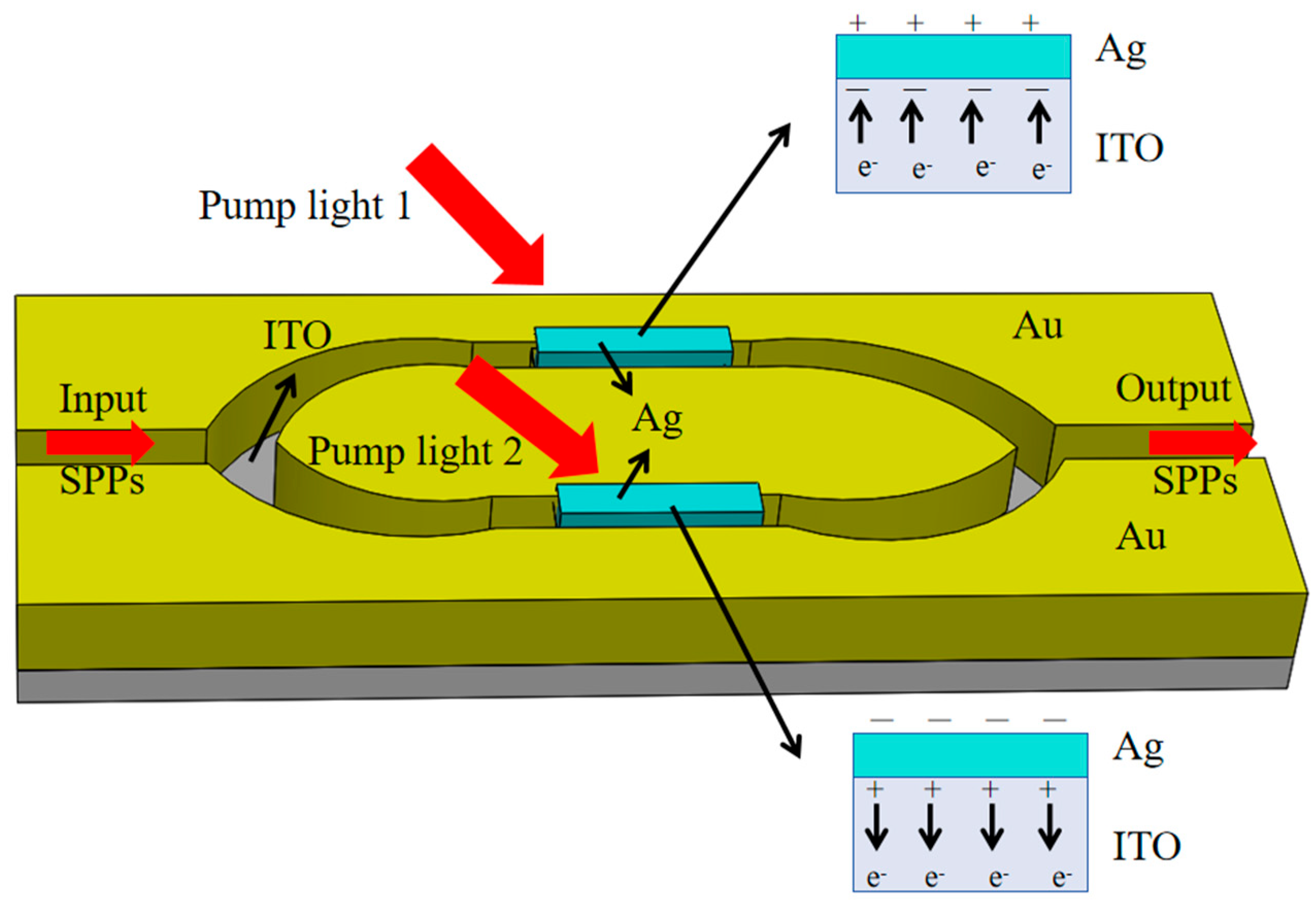

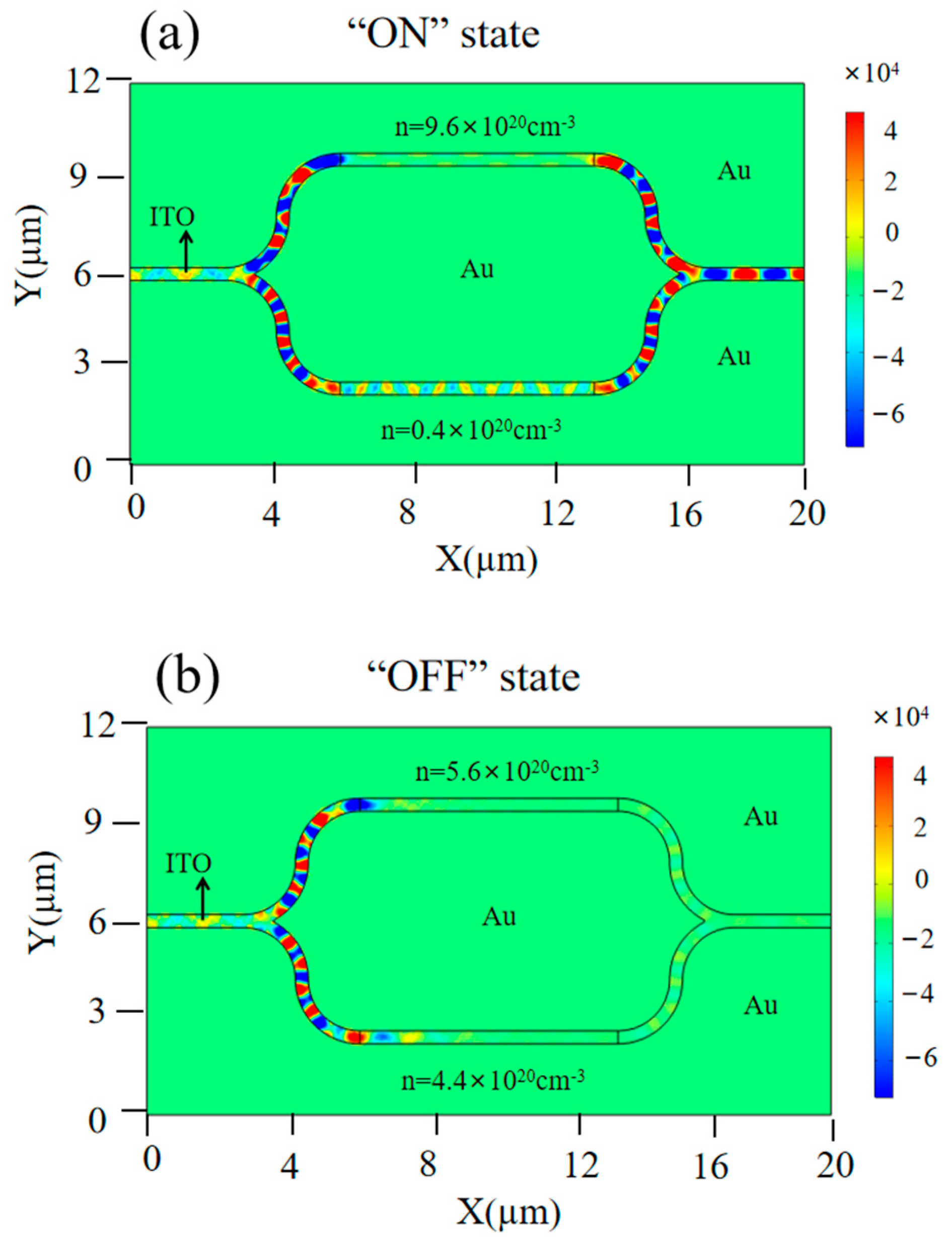



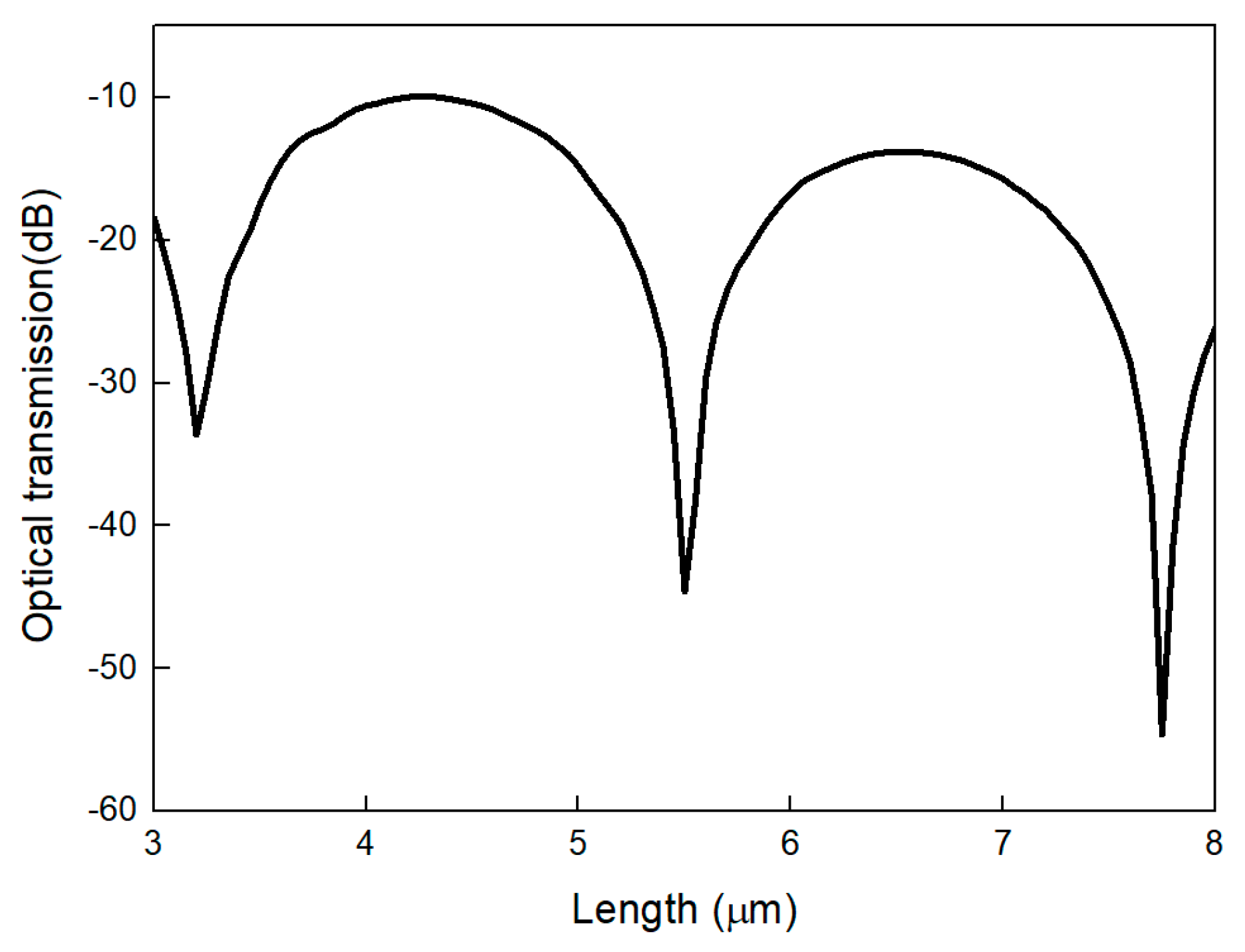
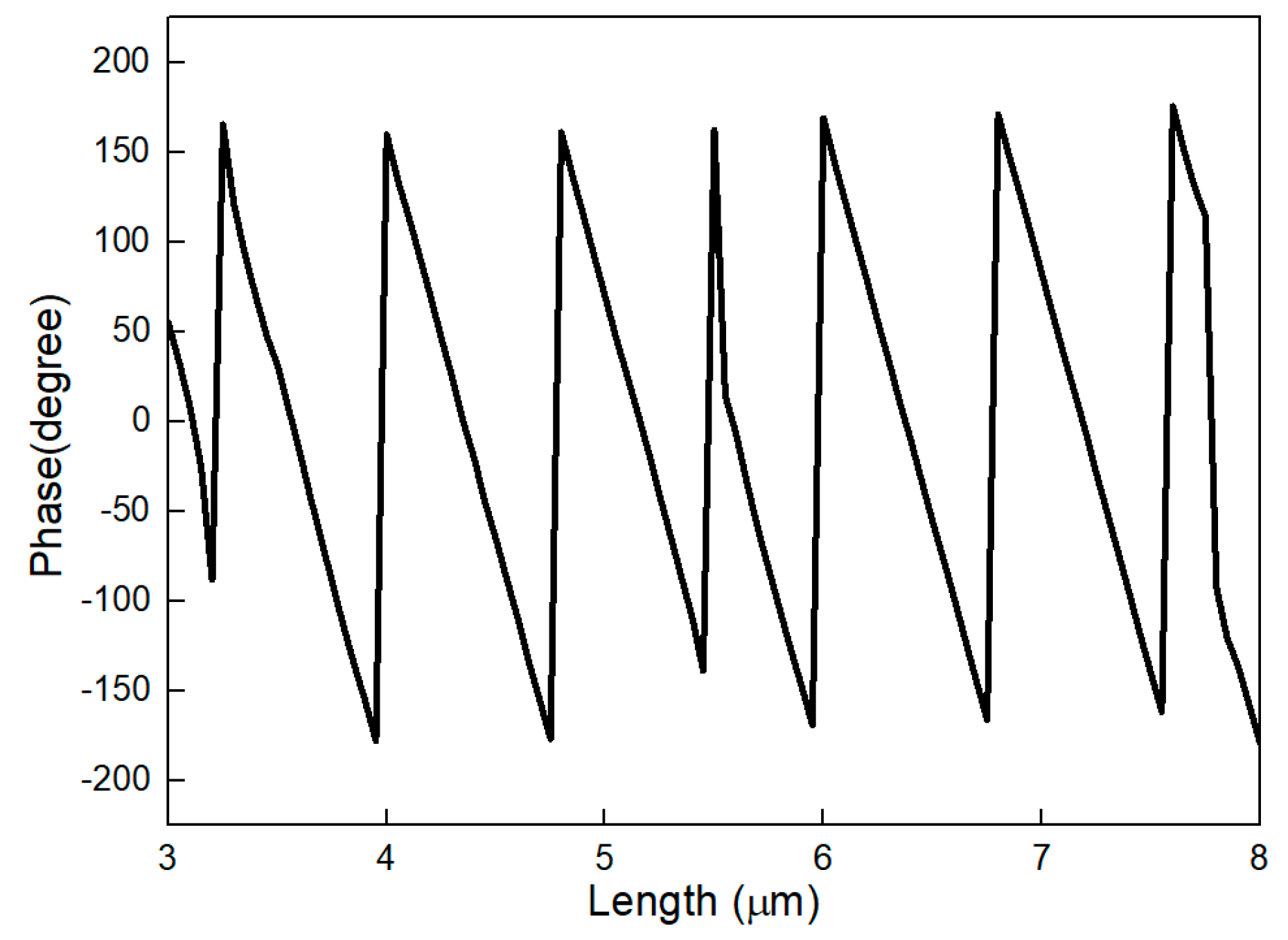
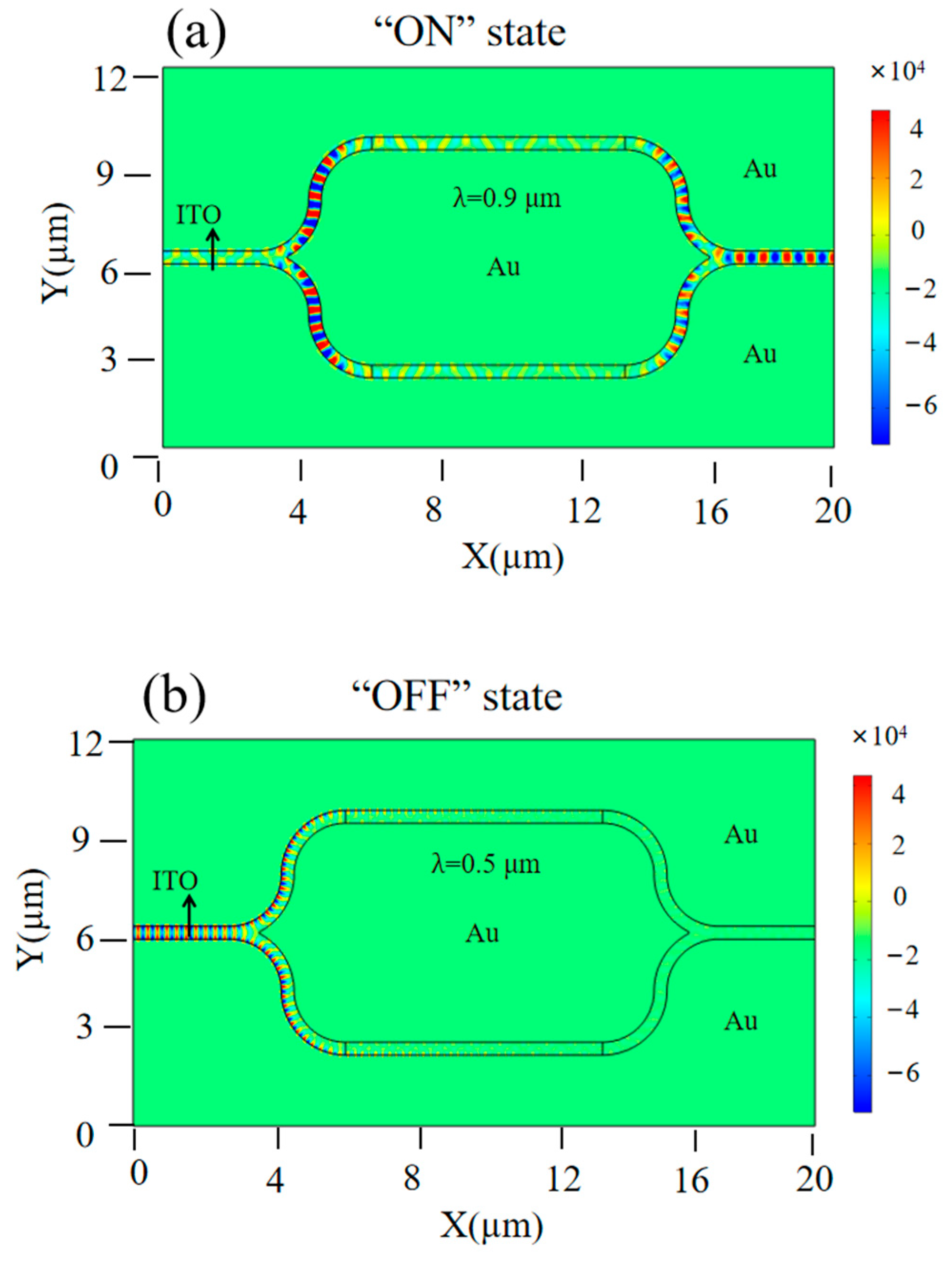

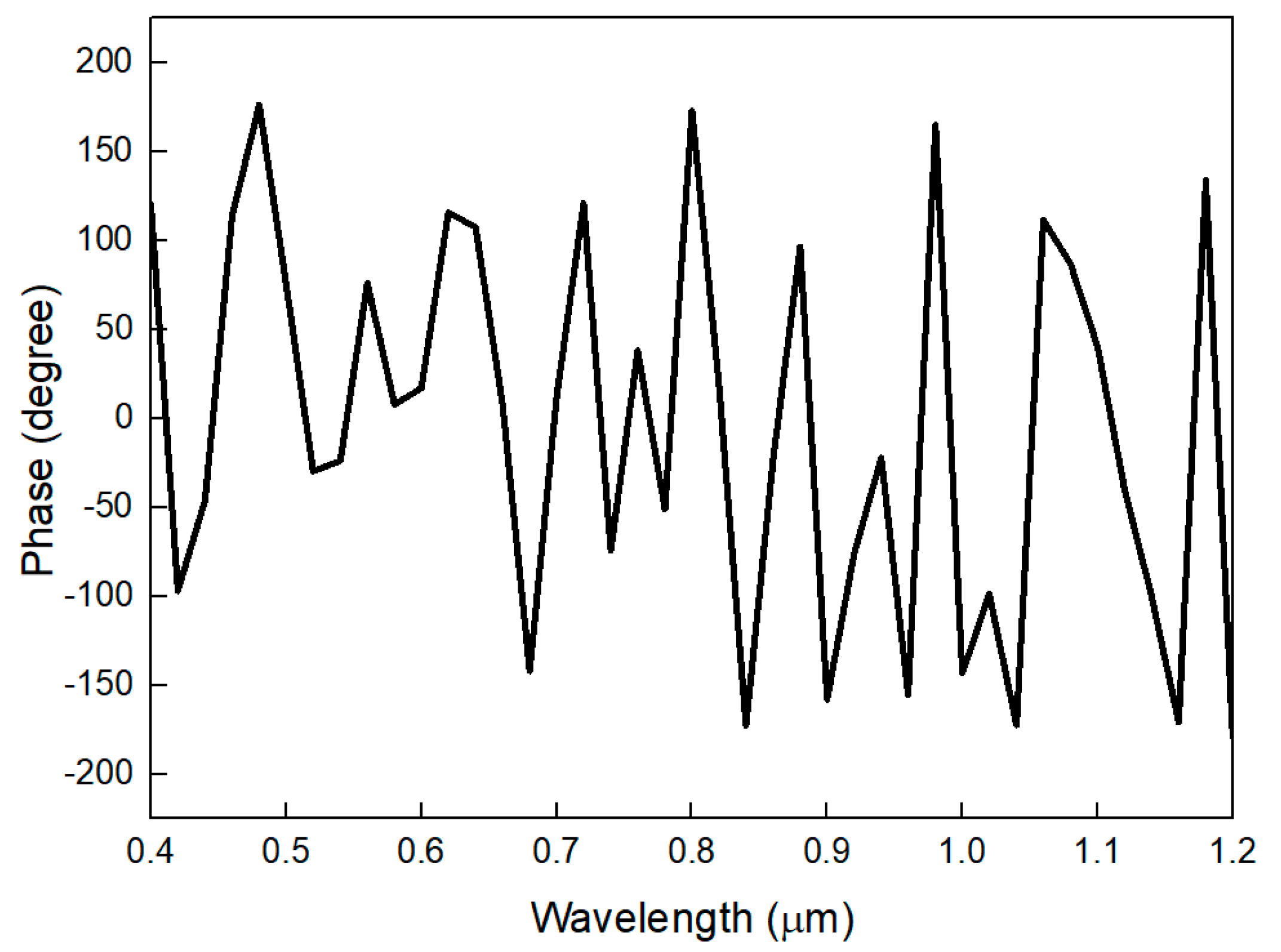

| Reference | Device Type | Extinction Ratio |
|---|---|---|
| [1] | Plasmon-enhanced graphene modulator | 3.5 dB |
| [27] | ITO-based ring resonator | 18 dB |
| [36] | Directly grown graphene anti-resonant fiber | 4.841 dB |
| [37] | Ti3C2Tx modulator based on a sandwich structure | 12.55 dB |
| [38] | Graphene microfibers | 3.92 dB |
| Our work | Mach–Zehnder-interferometer-based hybrid structure | 50.8 dB |
Disclaimer/Publisher’s Note: The statements, opinions and data contained in all publications are solely those of the individual author(s) and contributor(s) and not of MDPI and/or the editor(s). MDPI and/or the editor(s) disclaim responsibility for any injury to people or property resulting from any ideas, methods, instructions or products referred to in the content. |
© 2025 by the authors. Licensee MDPI, Basel, Switzerland. This article is an open access article distributed under the terms and conditions of the Creative Commons Attribution (CC BY) license (https://creativecommons.org/licenses/by/4.0/).
Share and Cite
Fang, J.; Yang, S.; Hu, X.; Lu, C.; Lu, M. An All-Optical Plasmon Modulator with a High Extinction Ratio Based on the Resonance of a Silver Block. Photonics 2025, 12, 646. https://doi.org/10.3390/photonics12070646
Fang J, Yang S, Hu X, Lu C, Lu M. An All-Optical Plasmon Modulator with a High Extinction Ratio Based on the Resonance of a Silver Block. Photonics. 2025; 12(7):646. https://doi.org/10.3390/photonics12070646
Chicago/Turabian StyleFang, Jimi, Sisi Yang, Xuefang Hu, Changgui Lu, and Mengjia Lu. 2025. "An All-Optical Plasmon Modulator with a High Extinction Ratio Based on the Resonance of a Silver Block" Photonics 12, no. 7: 646. https://doi.org/10.3390/photonics12070646
APA StyleFang, J., Yang, S., Hu, X., Lu, C., & Lu, M. (2025). An All-Optical Plasmon Modulator with a High Extinction Ratio Based on the Resonance of a Silver Block. Photonics, 12(7), 646. https://doi.org/10.3390/photonics12070646






